Product-led growth (PLG) is a go-to-market strategy that’s primarily led by the product itself: users are acquired, activated, and converted through a product experience. This usually occurs with little human intervention along the way. Often, this experience is offered for free or free in part, or with limitations. Free offerings allow users the opportunity to experience value for themselves over time. PLG contrasts from sales- or marketing-led grown motions in a few notable ways. In sales- and marketing-led growth motions, marketing campaigns and salespeople assist prospective users through their buying journey. These teams are often referred to as go-to-market (GTM) functions. By contrast, PLG leads with stellar product experiences to create sustainable revenue growth.
This motion has gained popularity as digital product experiences have improved dramatically over the past 20-30 years. As the stakes for these experiences continue to grow higher, research shows that preferences for excellent, intuitive digital experiences is growing along the way, including preferences for being able to quickly self-guide through steps like onboarding, learning how to use tools, or payment processing. More and more, we’re seeing wider adoption of PLG tactics in the market, either on their own or in complement to GTM-led motions. In most cases, PLG tactics result in significant growth.
Understanding Product-Led Growth
Some of the shifts in user preferences that PLG accommodates can also point us to the characteristics and processes of products and companies that supercharge this kind of growth – PLG is a force that centers user value in work across different functions.
The most successful products are often ones that immediately offer direct value to the user, with as little friction as possible. This might be a product experience that is fully self-explanatory, or one that requires very little effort to adopt and understand. These products often offer an experience that a user can engage in immediately without long sign-up flows, or any sign-up flows at all. This experience might also easily integrate into other aspects of the users’ workflow or tools, quickly creating network effects through information sharing.
This kind of experience requires deep, cross-functional effort. GTM, customer experience (CX) or product teams must work closely to craft and continuously refine the product-led journey. This effort culminates in a culture deeply rooted in delivering value to customers.
But reduced human interaction through the buying process doesn’t mean that companies have no interaction with or knowledge about users. GTM, CX, and product functions are all close to these users or buyers. They often see the wide-ranging impact of PLG on GTM funnels. Wide top-of-funnel growth, larger organic growth, more qualified and informed conversions, and lower customer acquisition costs are all important markers of a product experience that delivers immediate value.
Key Components of a Product Led Growth Model
Teams that drive PLG work together and experiment in a wide array of ways. However, there are a few key, common components. This includes a focus on the user experience as well as a highly specific definition of the revenue model — as in, how users enter and engage with the product itself and how that value is deployed, whether through a free trial or other “freemium” product experiences. Learn more below.
Product Teams Driving Growth
Teams that drive PLG often consist of a mix of product, engineering, design and/or marketing team members. Crafting low-friction, delightful experiences for users requires a deep culture of experimentation. Many organizations achieve this by adhering to an experimentation framework. Experimentation frameworks center on documenting hypotheses, benchmarking measures and signals of success before the work gets off the ground, and breaking hypotheses and ideas down into small increments that both immediately deliver value and de-risk work up ahead. They create an honest culture that both celebrates successes and applies shortcomings to future experimentation. Further, they create a strong reflection process built into the operating rhythms across PLG teams. These learnings can compound across the entire organization, contributing to a growing understanding of resonant customer experience and feedback.
Focus on User Experience
PLG experimentation centers around the user’s experience. It focuses on understanding what’s resonating, and where friction is. It also involves making sure the pathway to value is as clear as possible. This experience can be observed through the stages that users flow through: acquisition, activation, retention or engagement, and, finally, conversion. Different experiments have varying impacts on these metrics and areas in the user’s journey.
Sometimes in this experimentation there’s a question around how much PLG teams should focus on research and validation, or quickly launching new product increments. An experimentation framework that favors quickly working through small increments results in a highly confident team that can generate great outcomes and learnings. This outcome de-risks an organization’s ability to move more deeply into the work or pivot to the next experiment.
Along the way, there are a number of high- and low-fidelity discovery methods that can help teams build confidence, craft experiments, and de-risk future development. Developing a deep understanding of the target market is foundational to this work. Beyond that, there’s a range of testing methods that can build this understanding through the experimentation process. This includes A/B testing, pilots, beta features, and surveys. These methods allow PLG teams to closely observe both qualitative and quantitative data, where there’s enough volume to do so.
Trial Period or Freemium Model
As mentioned above, there are many stages of the user journey through a PLG motion. There are a number of different methods that support how users enter the product and achieve more value over time. This might involve offering access to the full product experience for a specific range of time or a limited free trial. It could also involve full access to the product with some limitations. With this method, PLG teams might restrict access to certain features or place limits on the amount of usage allowed before a user must upgrade. One thread ties these methods together: a clear pathway for users to achieve value in a short amount of time.
Plural’s Approach to Product-Led Growth
At Plural, our approach to PLG is deeply rooted in our mission to make democracy more accessible and transparent. In 2023, we launched a version of our tracking platform at no cost. Our free offering offers comprehensive policy data across the US, focusing on ease of use. We’re proud to have helped thousands of users – from professionals, researchers, to concerned constituents. Our users access important information about bills that impact their communities.
Along the way, we’re also responding to increasingly complex policymaking challenges. Beyond our free offering, we offer powerful tools to help professionals shape legislation. These tools are crafted with the specific, diverse needs of the industry in mind. They’re designed to help advocacy organizations, corporations, law firms, and associations alike. Plural’s solutions help these teams carve the fastest pathway to solving complex problems, engaging stakeholders, and accomplishing their policy goals.
Tips for Developing a Product-Led Growth Strategy
PLG is becoming increasingly resonant across tools and organizations. In the midst of this growth, it’s important to stay anchored in a few key concepts that help teams work together. These concepts empower PLG teams to continuously achieve outcomes and better results for their customers. They result in robust experiences that truly deliver value.
At the core of any PLG strategy is a deep understanding of the problems users are facing. This understanding should be shared thoroughly across different functions within the organization. It can be common for GTM, CX, and product functions to become disconnected. Developing a successful PLG strategy — from acquiring users, encouraging activation, and monetizing those experiences to support growth — involves careful coordination, inputs, and decisions from each of these functions. Defining the terms of this collaborative effort up-front can be a helpful way to anchor PLG work. This might involve employing decision-making frameworks or clearly defining areas of ownership.
Supporting PLG motions may require new resources and efforts that may not always feel as exciting as new product experiments, improvements, or additions. Within a successful PLG motion, critical needs like infrastructure, security improvements, and data tracking become essential to maintaining a successful flow.
Lastly, measurement is key. Successful PLG teams work quickly and incrementally. It’s important to take the time to define success up-front. Along the way, it’s crucial to assess what’s working, how experiments measure up to their hypotheses, what we’re learning from them, and how those learnings resonate throughout the organization.
Plural’s Legislative Intelligence Tools
Plural helps public policy teams get and stay ahead in the public policy landscape. With Plural, you’ll:
- Access superior public policy data
- Be the first to know about new bills and changes in bill status
- Streamline your day with seamless organization features
- Harness the power of time-saving AI tools to gain insights into individual bills and the entire legislative landscape
- Keep everyone on the same page with internal collaboration and external reporting all in one place
Create a free account or book a demo today!
More Resources for Public Policy Teams
Key Benefits of AI for Lobbying & Advocacy
Want to be able to explain the benefits of artificial intelligence for lobbying and advocacy? Everyone is talking about AI. And we get it, it’s not simple to understand. But as an AI-powered organization, Plural is here to help you get the most out of advancements in AI to make your job as a policy […]
2025 Legislative Committee Deadlines Calendar
Staying on top of key deadlines is manageable in one state, but if you’re tracking bills across multiple states, or nationwide, it quickly becomes overwhelming. That’s why we created the 2025 Legislative Committee Deadlines Calendar. Stay ahead of important dates and download our calendar today. Get started with Plural. Plural helps top public policy teams get […]
End of Session Report: Florida 2024 Legislative Session
The 2024 Florida legislative session saw significant activity in the realm of insurance and financial services, reflecting key themes of consumer protection, market stability, and regulatory modernization.




